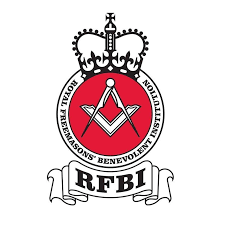All the data points to a hotter than-average summer, which means Aussie businesses should prepare for extreme weather during the warmer months.
Here are some steps you can take to help prepare your small business, in case droughts and floods affect your area.
The Australian Actuaries Climate Index (AACI) indicate conditions are ripe for a destructive bushfire season across Australia this summer, following a dry winter and a rise in extreme temperatures.
According to the index, the frequency of extreme high temperatures was above average in northern and eastern parts of the country in autumn, but lower than average in the south and west.
Rade Musulin, lead collator of the Australian Actuaries Climate Index, says with Australia’s transition to an El Niño alert phase in late May, there is a strong likelihood rainfall will continue to decline and a significant dry period may begin.
“More dry weather, along with the record amounts of vegetation growth from three years of consistent wet weather, means the conditions are primed for potentially high bushfire risk in the summers ahead,” he said.
The Bureau of Meteorology currently estimates there’s a 70 per cent chance of an El Niño system developing. This weather pattern is synonymous with low rainfall and bushfires.
Prepare your business for bushfire season
While El Niño events, bushfires and drought are tough conditions for small businesses to manage, there are steps you can take to mitigate these risks.
1. Develop a comprehensive emergency plan
Create a detailed emergency plan tailored to the threat of bushfires and floods. This plan should outline evacuation procedures, communication protocols, designated assembly points and responsibilities for each employee during an emergency.
2. Make sure your insurance cover is up to date
Review your current insurance policies to ensure they provide adequate coverage for potential damages caused by El Niño-induced events. Speak with an insurance broker, who can discuss your options and the best cover for your specific business needs.
3. Create off-site data backup and storage
Protect crucial business data and documents by regularly backing them up and storing them off-site or on secure cloud-based platforms. This will minimise the risk of data loss during extreme weather events.
4. Train staff to respond to emergency situations
Hold regular training sessions to educate employees about the emergency plan and the steps they should take during bushfires or floods.
5. Maintain landscaping and clear surroundings
Regularly maintain any garden around your business premises, trim trees and remove dry foliage. Similarly, ensure proper drainage to prevent flooding.
6. Check your communication channels
Make sure you have access to multiple communication channels to stay up to date on weather and evacuation orders. Use social media, emergency alert systems and reliable news sources so you know what’s happening, as it happens.
7. Develop a business continuity plan
Create a business continuity plan that outlines the steps to follow to resume operations after a disaster. This plan should address immediate recovery needs, temporary business relocation and any potential supply chain disruptions.
8. Do regular drills
Organise periodic drills to test the effectiveness of your emergency plan. Identify areas for improvement and make necessary adjustments based on the outcomes of these exercises.
Preparing for a dry summer
El Niño-induced bushfires and floods can pose significant challenges to small businesses.
But with careful preparation and planning, businesses can increase their chances of minimising losses and bouncing back after a disaster. The key lies in being proactive rather than reactive when it comes to disaster preparedness.
If you have any questions with regards to your cover and ensuring you are adequately protected this Summer, please don’t hesitate to reach out to us on (02) 9587 3500 or emailing theteam@wsib.com.au. Alternatively you can visit our contact page by clicking below.


















